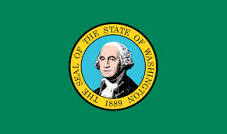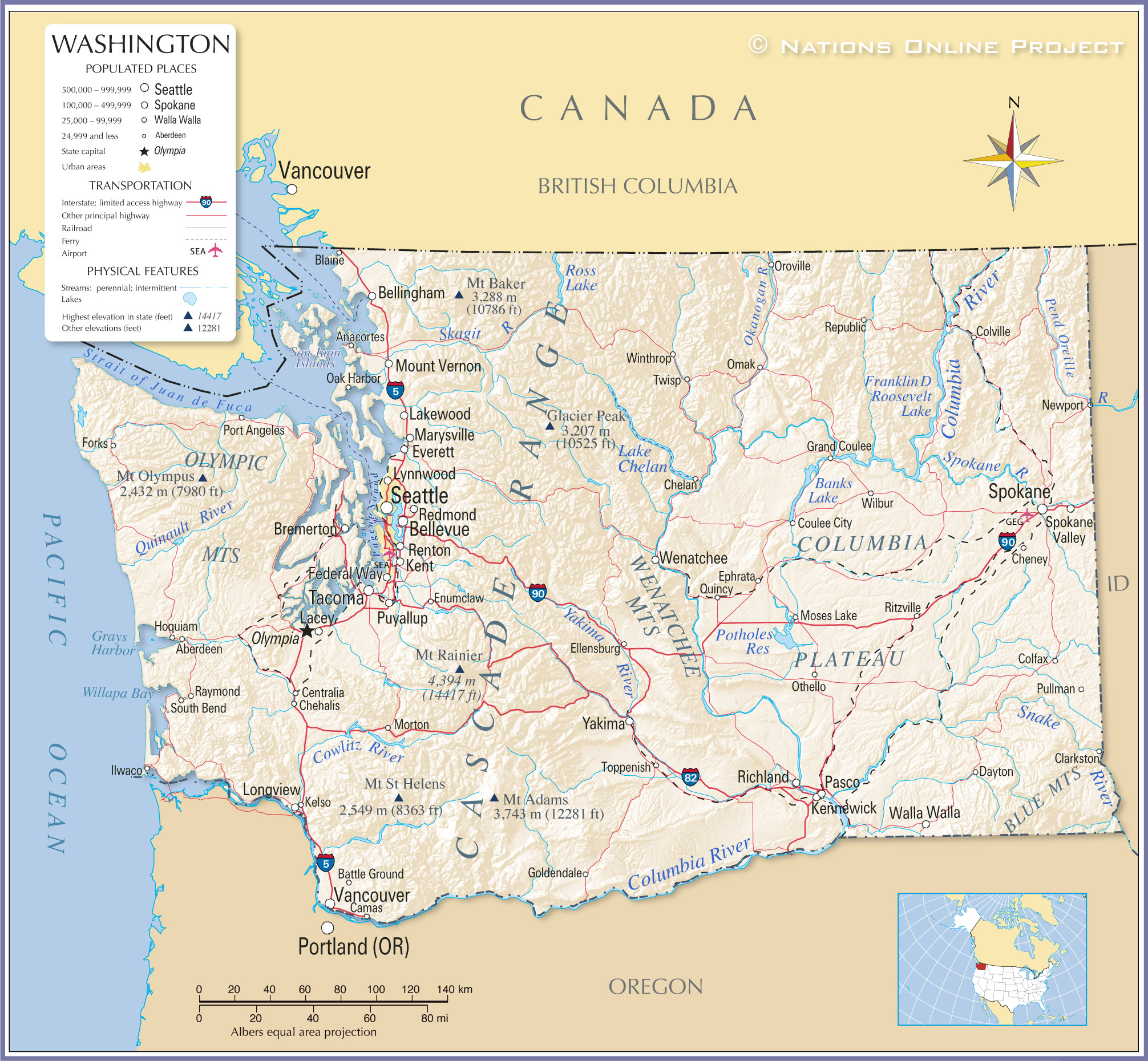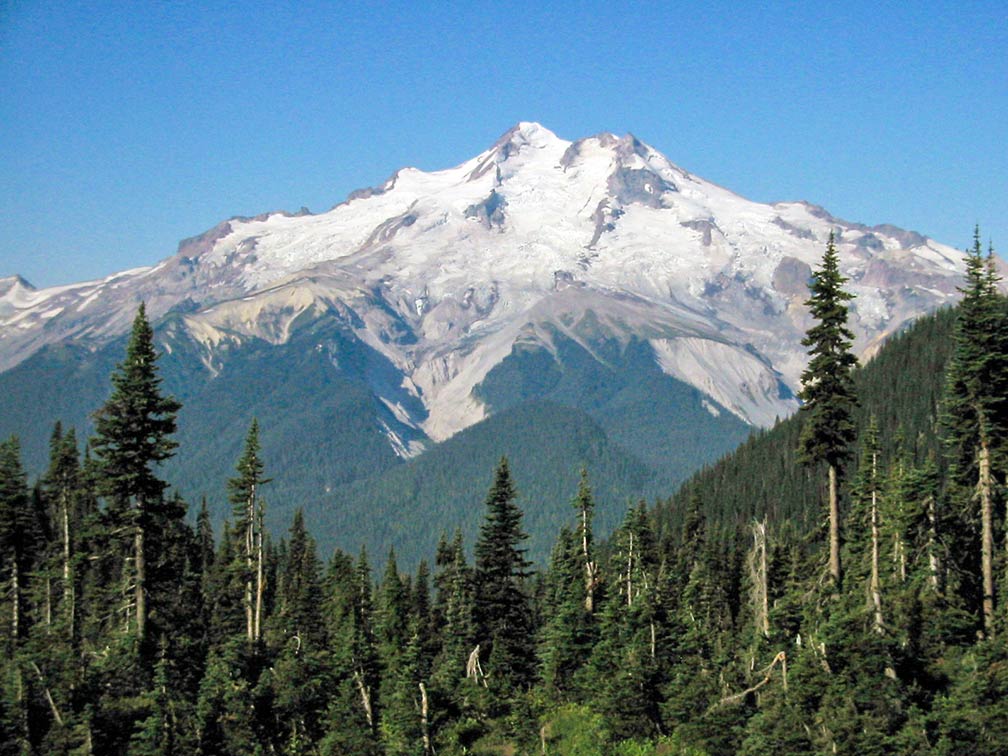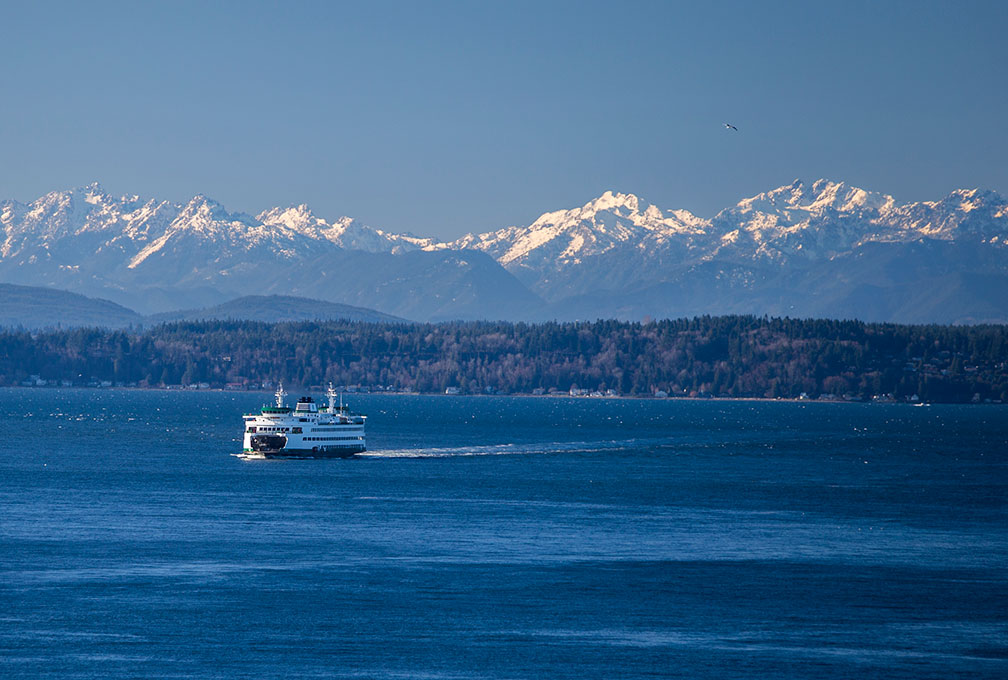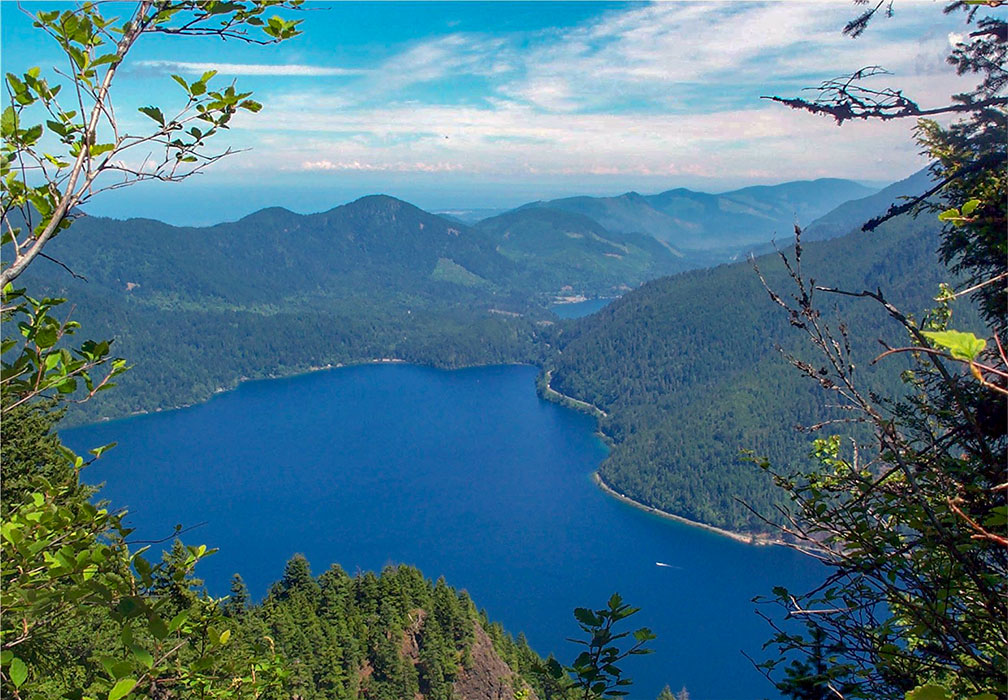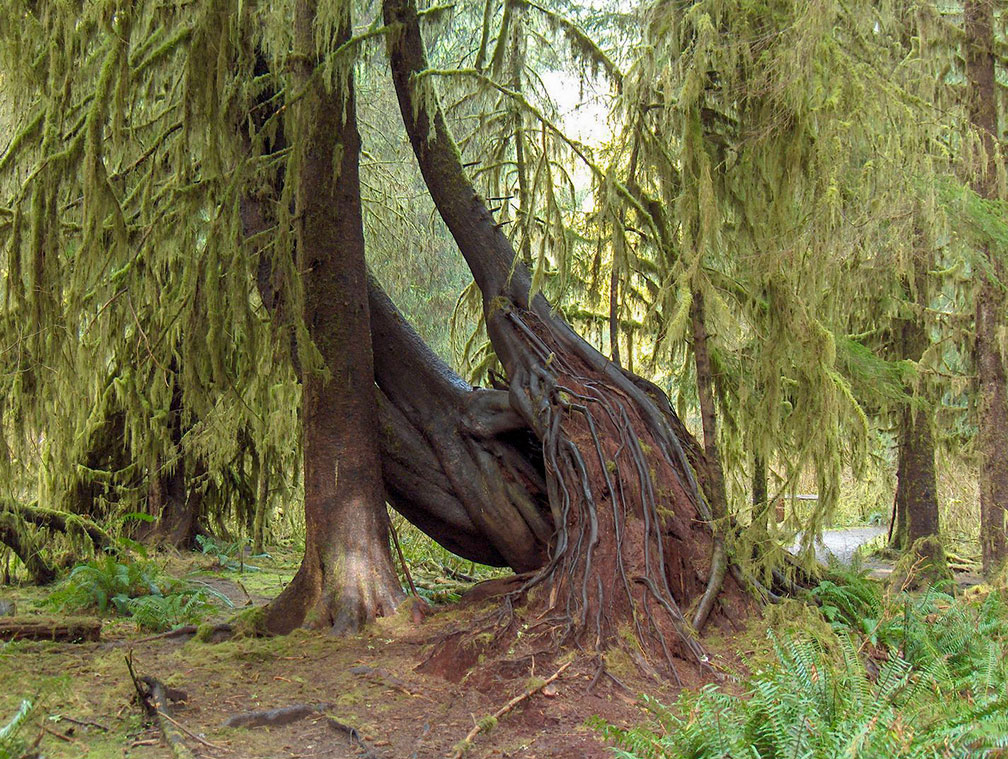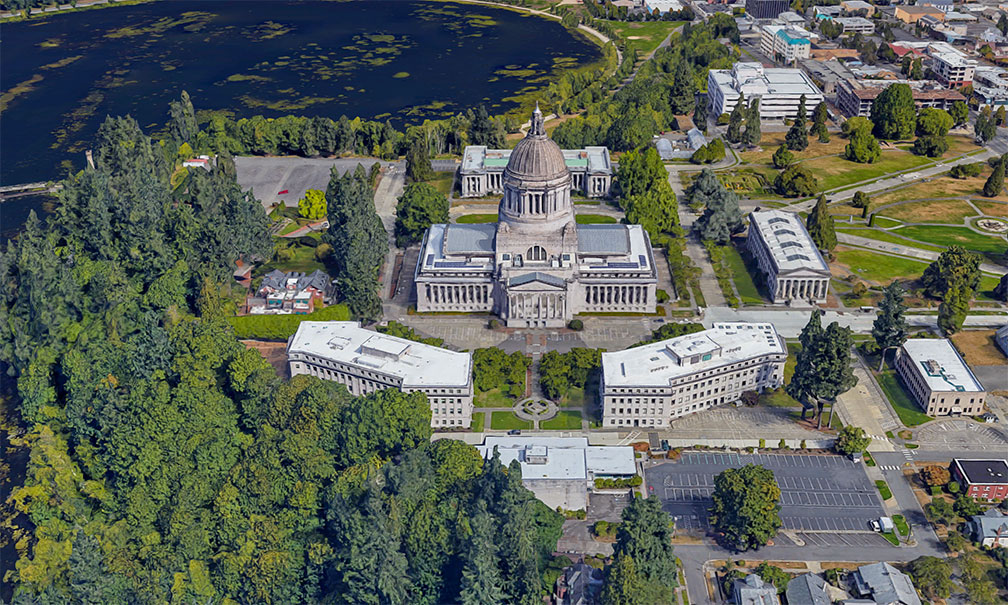Cities and Towns in Washington
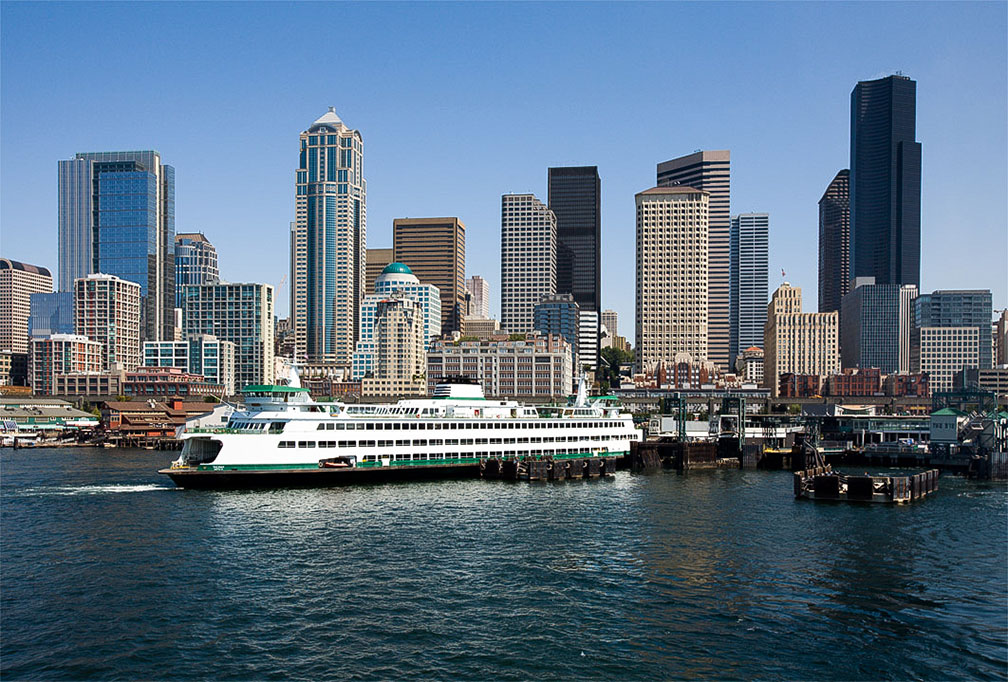 Downtown Seattle, the center of the largest city in Washington State, with a Bainbridge Island ferry in the foreground.
Image: Jamies
Downtown Seattle, the center of the largest city in Washington State, with a Bainbridge Island ferry in the foreground.
Image: Jamies
The map shows the location of following cities and towns in Washington: Capital city:
Olympia (48,000)
Largest cities in Washington state
The 10 largest cities in Washington state:
1.
Seattle 745,000
2. Spokane 219,190
3. Tacoma 216,279
4. Vancouver 183,012
5. Bellevue 147,600
6. Kent (in the Seattle–Tacoma metroplex) 129,618
7. Everett 111,262
8. Renton 102,153
9. Federal Way 97,044
10. Yakima 93,884
Source: Population figures est. 2018
Airports
By far the busiest airport in Washington state is
Seattle–Tacoma International Airport (
IATA code: SEA); it is the largest airport in the Pacific Northwest region by number of passengers. In 2019, more than 24 million people used Seattle-Tacoma Airport.
Other major airports are:
Spokane International Airport (Geiger Field; IATA code: GEG),
Bellingham International Airport (IATA code: BLI), and the
Tri-Cities Airport in Pasco (IATA code: PSC).
Other cities and towns in Washington: Aberdeen, Anacortes, Battle Ground, Bellingham, Blaine, Bremerton, Camas, Centralia, Chehalis, Chelan, Cheney, Clarkston, Colfax, Colville, Coulee City, Dayton, Ellensburg, Enumclaw, Ephrata, Federal Way, Forks, Goldendale, Grand Coulee, Hoquiam, Kelso, Kennewick, Lacey, Lakewood, Longview, Lynnwood, Marysville, Morton, Moses Lake, Mount Vernon, Newport, Oak Harbor, Omak, Oroville, Othello, PascoIlwaco, Port Angeles, Pullman, Puyallup, Quincy, Raymond, Redmond, Renton, Republic, Richland, Ritzville, Seattle, South Bend, Spokane Valley, Toppenish, Twisp, Walla Walla, Wenatchee, Wilbur, Winthrop, and Yakima.


